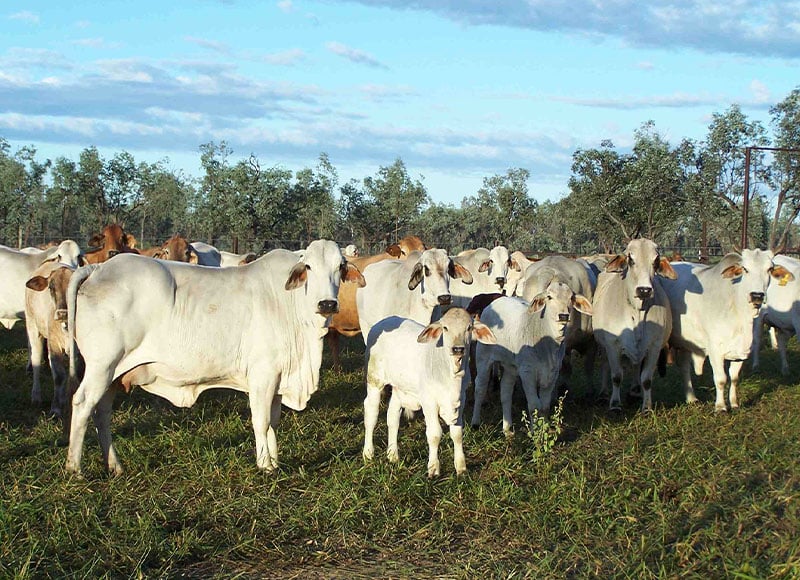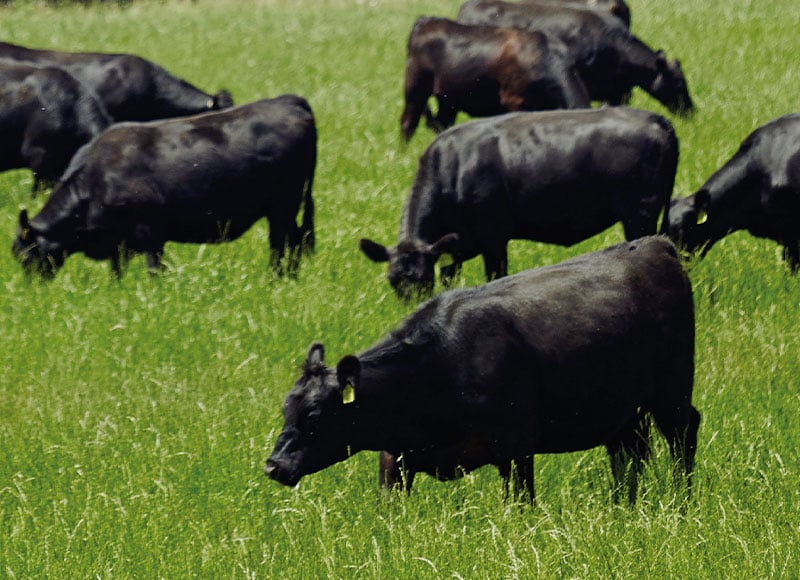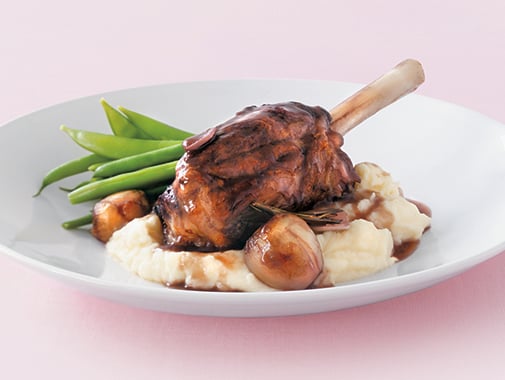AN OVERVIEW OF ON FARM
Australia's cattle and sheep farmers are committed to sustainable and ethical production. They are the custodians of 47% of Australia's landmass, caring for approximately 28 million cattle and 74 million sheep. Australian cattle and sheep producers are recognised around the world for their animal husbandry and farm management techniques. The Australian livestock industry takes pride in its genetics and is at the forefront of technological advancements in livestock production efficiency. Australian farmers are also highly progressive in the areas of farm and pasture improvement and water management. Our industry is focused on the highest possible food safety standards with traceability and quality assurance systems through the supply chain; and is built largely by family owned producers committed to delivering world-class beef and lamb.

AUSTRALIAN BEEF
Australia produces 3% of the world’s beef supply and is the third largest beef exporter in the world. Beef is produced in every state and territory in Australia however, nearly 50% of the national herd is located in Queensland,with most of Australia's cattle located on pasture-based properties and stations.
The Australian beef industry is broadly grouped into northern and southern production areas. The Northern production systems has a relatively small number of large properties with high cattle numbers. The dominant cattle breeds are Bos Indicus (eg Brahman) or Bos Indicus cross (eg Droughtmaster), which are better suited to the harsh environmental conditions. The Southern production system, on the other hand, has a large number of smaller properties which have lower cattle numbers. The dominant cattle breeds are Bos Taurus (eg Angus or Hereford), which are better suited to the more temperate environmental conditions.

BOS INDICUS
Originating from Asia, Bos Indicus cattle breeds are a natural fit for humid, tropical regions like Northern Australia. Their slick, short-haired coats and naturally occurring sweat chemicals repel cattle ticks and other parasites. Some Bos Indicus breeds also produce a chemical in their tails to apply their own insect repellent when they swat flies.
Bos Indicus cattle generally have a larger frame and longer legs, allowing them to easily cover the large and sparse areas of land in search of food and water. They are also natural foragers, which makes them adaptable to harsh drought conditions.
Cattle with Bos Indicus bloodlines can be distinguished by a hump sitting across their shoulders on their back, similar to a camel. This is where fat is kept for tough times. They also have large, floppy ears and dewlap (the saggy skin in front of their briskets) which help to keep the cattle cool.
Common breeds include Brahman, Droughtmaster, Santa Gertrudis, Brangus (a cross of Angus and Brahman) and Braford (a cross of Hereford and Brahman).

BOS TAURUS
Bos Taurus cattle originated in Europe and are often referred to as ‘British breeds’. They prefer more temperate climates and are mostly found in the Southern regions of Australia. They have thicker coats to weather cooler winters and do not have the notable 'hump' of their Bos Indicus relatives.
With a smaller frame, they mature more quickly and grow muscle bulk more rapidly than their Bos Indicus cousins. Arguably the best known Bos Taurus breed is the Angus, which originates from Scotland. The Angus carries remarkable adaptability and quality genetics, regularly being used to strengthen other breeds of cattle through crossbreeding.
Common breeds include Angus, Hereford, Shorthorn, Charolais, Simmental and Murray Grey.

WAGYU
Wagyu is a Japanese breed of cattle derived from native Asian cattle – ‘Wa’ means Japanese and ‘gyu’ means cattle. Despite the Asian origin, they are actually classified as Bos Taurus.
Wagyu were used for centuries in Japan as hardworking draft animals, selected for their physical endurance – their large amounts of intramuscular fat cells provided a readily available source of energy.
Australia now has the largest Wagyu herd outside Japan, although 80-90% of domestic production is exported. Traditionally, Wagyu are raised on pasture and then spend a considerable amount of time in high tech feedlots – anywhere from a year through to 600 days; wagyu production is therefore a considerably longer process than grass-fed or grain-fed beef.
Wagyu is unsurpassed for its marbling, which leads to tender and juicy beef with rich textures and flavour. Wagyu tends to have a softer fat composition and a finer meat texture than other beef.

AUSTRALIAN LAMB
Australia is the world’s largest exporter of sheep meat and the second largest producer of lamb and mutton.
In Australia, sheep are produced in a wide range of climates, from the arid and semi-arid parts of the inland region to the high rainfall areas of New South Wales, Victoria, South Australia, Tasmania and the southwest corner of Western Australia.
All Australian sheep are raised on pasture, and the significant majority are also finished on pasture. A very small proportion of sheep farmers (around 5%) grain finish their lamb to optimise growth.

